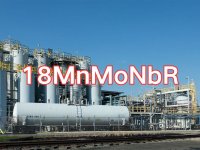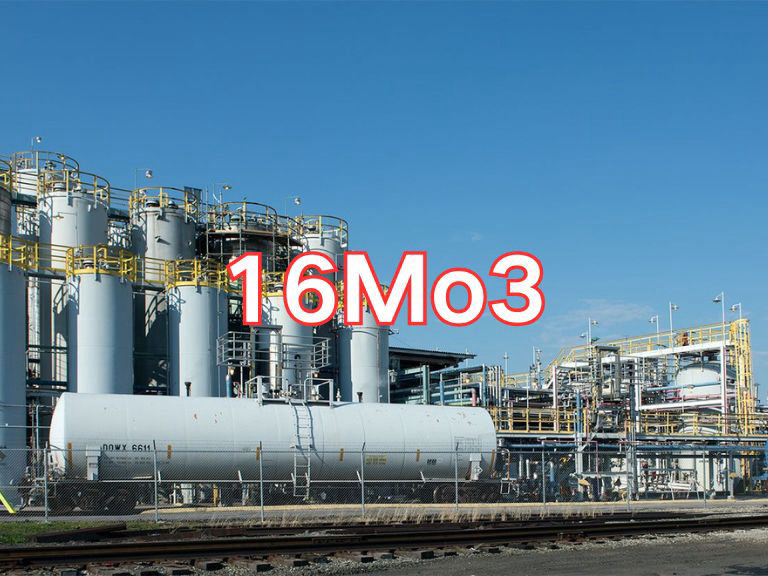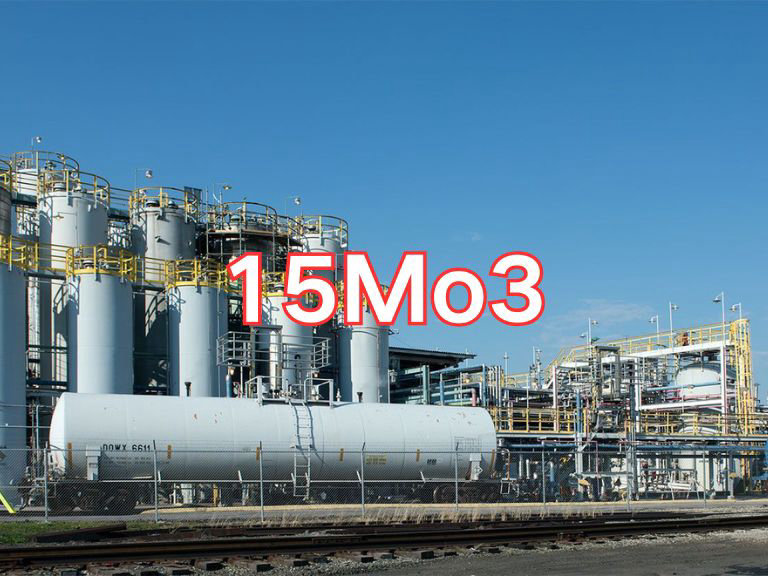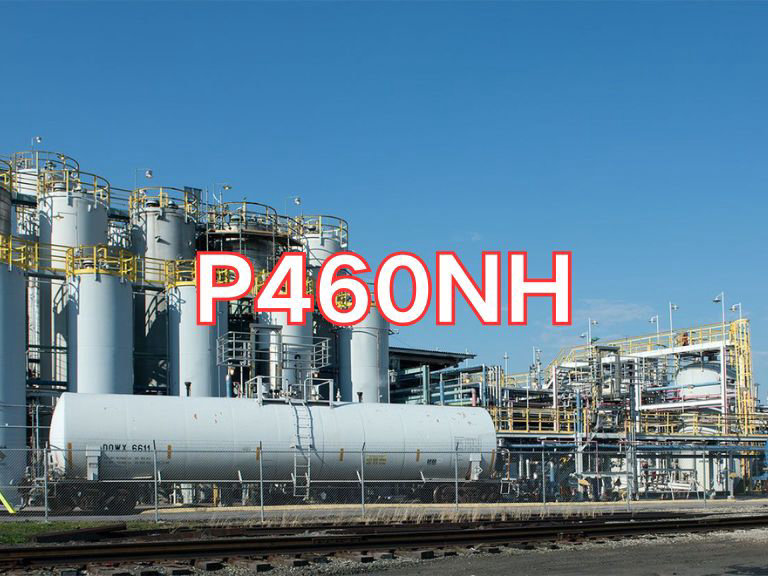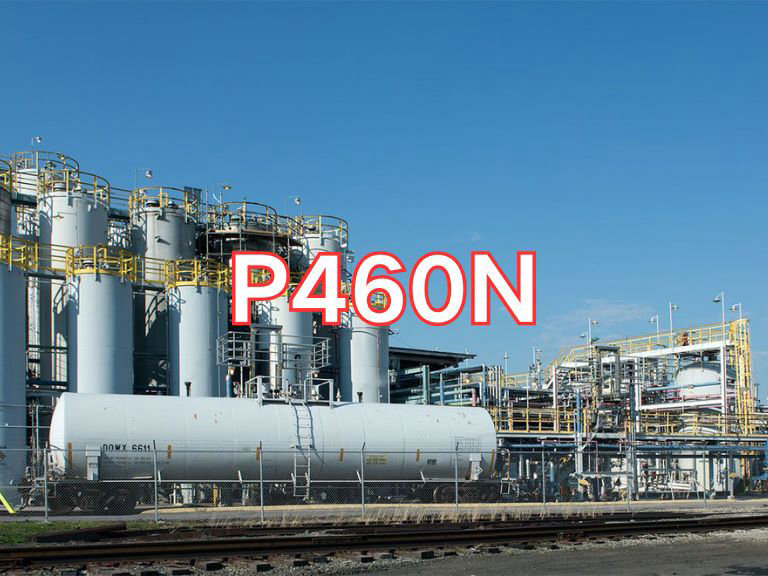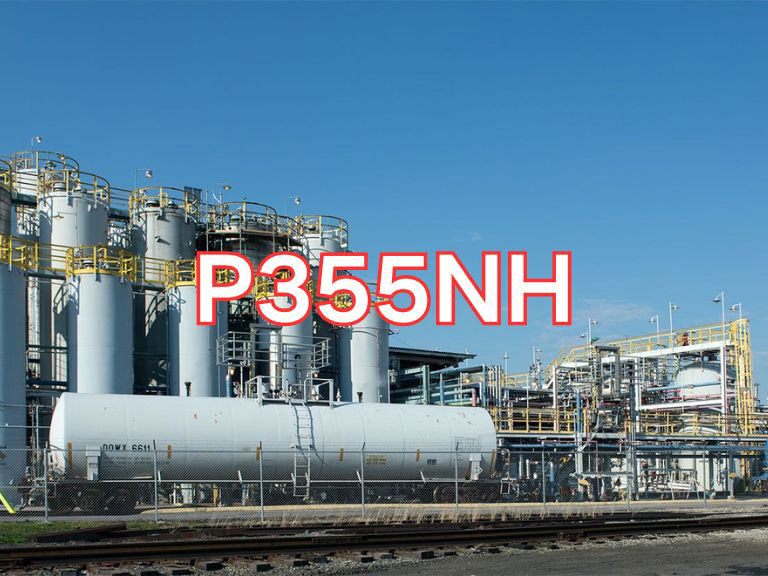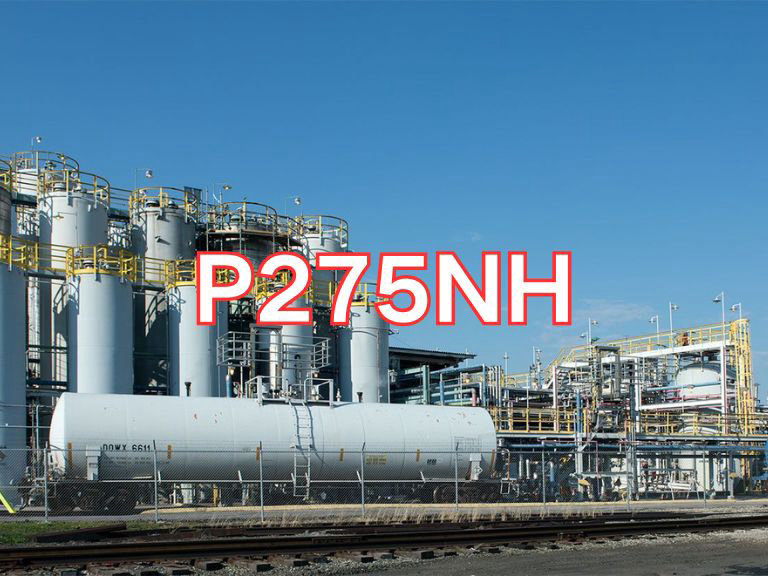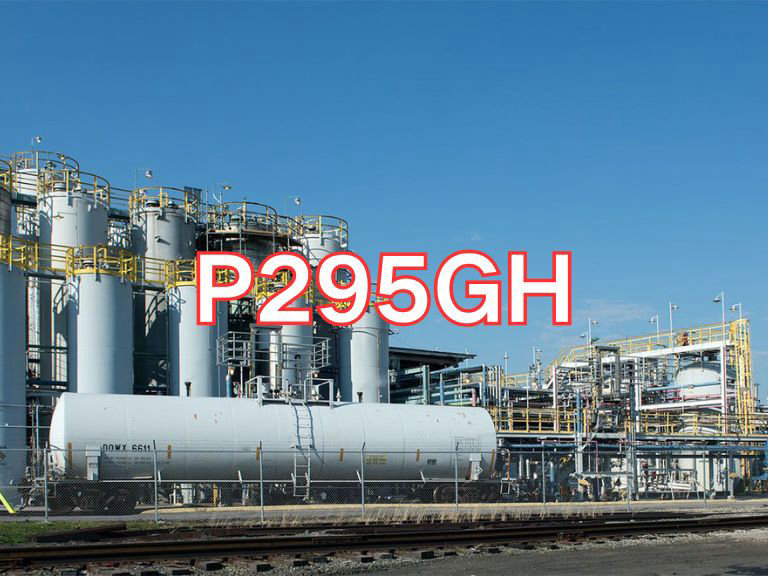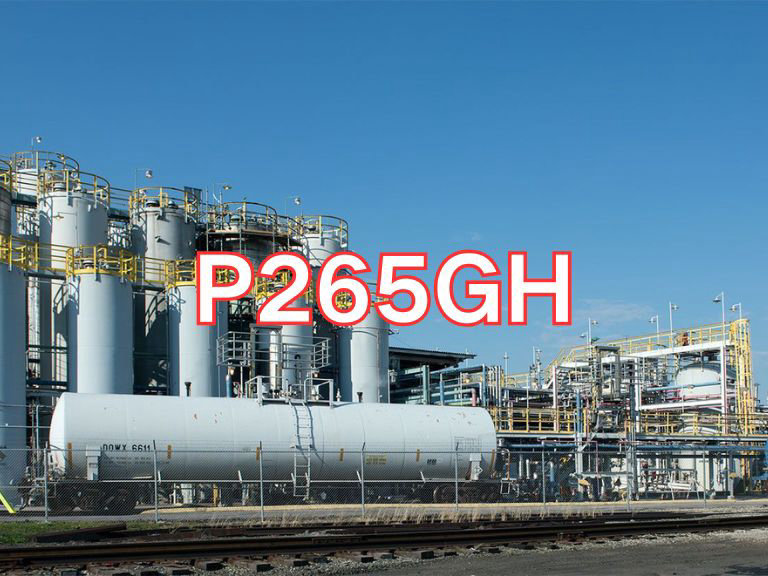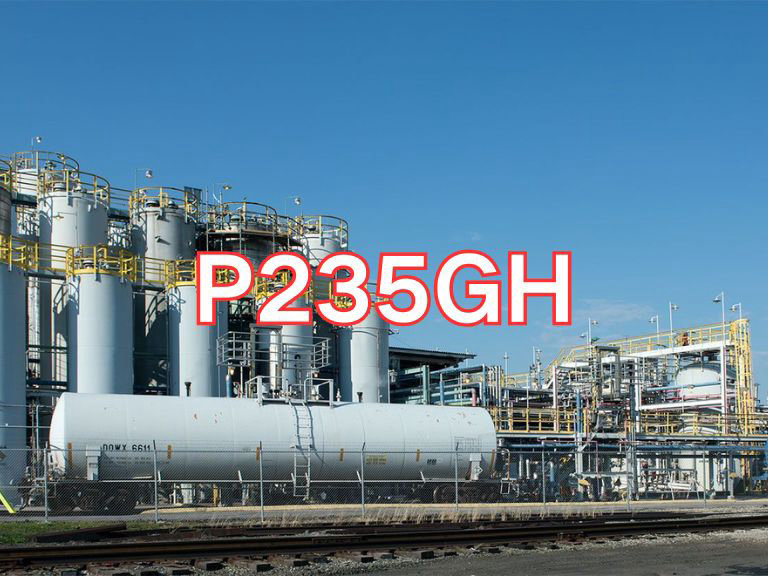

18MnMoNbR
18MnMoNbR is a high-strength, high-toughness low-alloy heat-resistant steel with excellent weldability, widely used in the fabrication of welded pressure vessels operating under high-temperature and high-pressure conditions.
The grade designation carries specific technical meaning:
- "18" indicates an average carbon content of approximately 0.18% (by weight), providing the base strength;
- "Mn" stands for manganese, which enhances solid-solution strengthening and hardenability;
- "Mo" denotes molybdenum, significantly improving the steel’s elevated-temperature strength (hot strength) and resistance to hydrogen corrosion, while also suppressing temper embrittlement;
- "Nb" refers to niobium, a strong carbide-forming element that refines grain structure, raises the recrystallization temperature, and provides precipitation strengthening;
- "R" is the first letter of the Chinese pinyin "Rong" (meaning "vessel"), indicating its application in pressure equipment.
Thus, 18MnMoNbR refers to a specialized pressure vessel steel with ~0.18% carbon and alloyed with manganese, molybdenum, and niobium.
This steel plate is primarily used in critical equipment such as high-pressure reactors, hydroprocessing reactors, heat exchangers, and large spherical tanks in industries including petrochemicals, coal chemical processing, and fertilizer production. Its typical service temperature ranges from -20°C to 450°C, especially suitable for pressure-bearing components subjected to long-term high-temperature loading and complex stress. Key features of 18MnMoNbR include: yield strength ≥390 MPa, tensile strength 540–680 MPa, and excellent overall mechanical properties; good strength and microstructural stability at elevated temperatures; enhanced resistance to hydrogen-induced cracking (HIC) and temper embrittlement due to the synergistic effect of Mo and Nb; and good weldability with proper preheating and post-weld heat treatment (PWHT) to ensure joint quality.
Currently, 18MnMoNbR is manufactured and inspected in accordance with the Chinese national standard GB/T 713-2014 Steel Plates for Boilers and Pressure Vessels. Published and implemented in 2014, this standard replaced the previous GB 713-2008 edition and introduced more comprehensive and stringent requirements on chemical composition, mechanical properties, impact toughness, ultrasonic testing, and thickness-direction properties. It has become one of the core standards widely adopted in China’s boiler and pressure vessel industry. As a representative of high-end domestic pressure vessel steels, 18MnMoNbR has achieved large-scale engineering application, significantly supporting the localization and independent development of China’s major industrial equipment.

Ultrasonic Testing (UT)
A key non-destructive testing technique that uses high-frequency sound waves to detect internal flaws in steel plates. The probe emits sound waves, which reflect when encountering defects such as cracks or inclusions. The receiver captures the echoes, enabling precise determination of defect location and size. With high sensitivity, strong penetration, and fast inspection speed, UT effectively ensures internal quality, widely used in the production of heavy plates, pressure vessel plates, and other high-end products to guarantee safety and reliability.

Magnetic Particle Testing (MT)
A common surface inspection method that magnetizes the workpiece, causing leakage magnetic fields at surface or near-surface defects like cracks or inclusions, which attract magnetic particles to form visible indications. Simple to operate and highly sensitive, MT is suitable for rapid inspection of surface and near-surface flaws in ferromagnetic materials, widely used for online or offline inspection of plate edges, ends, and welds, ensuring product quality and safety.

Penetrant Testing (PT)
A non-destructive method for detecting surface-breaking flaws. A penetrant liquid is applied to the cleaned steel surface, allowing it to seep into defects such as cracks or pores. After removing excess penetrant, a developer is applied, causing the trapped penetrant to bleed out and form visible indications. Simple and cost-effective, PT is suitable for inspecting surface defects in various non-porous materials, commonly used for welds, castings, and complex components, effectively ensuring surface quality of steel plates.

